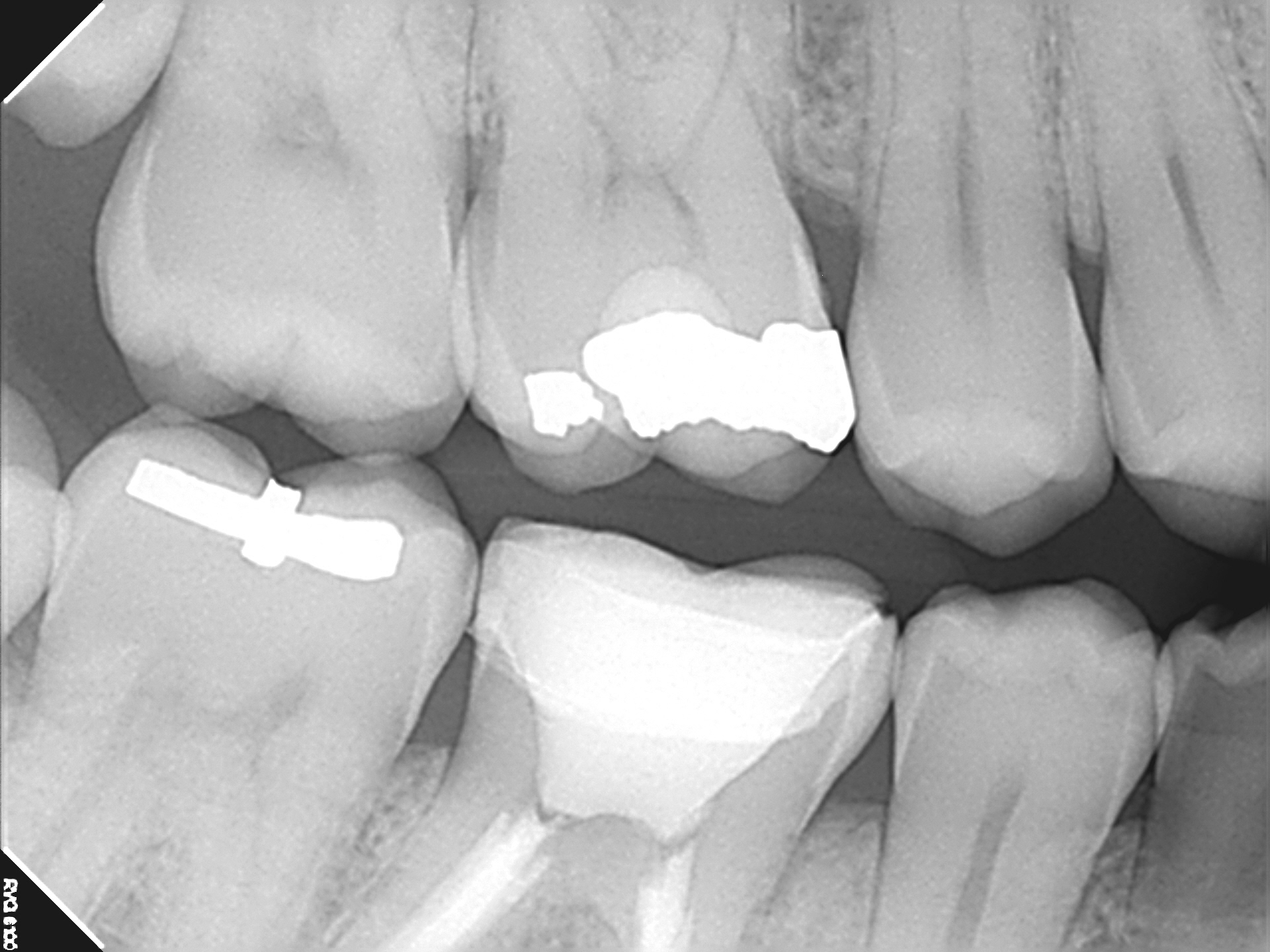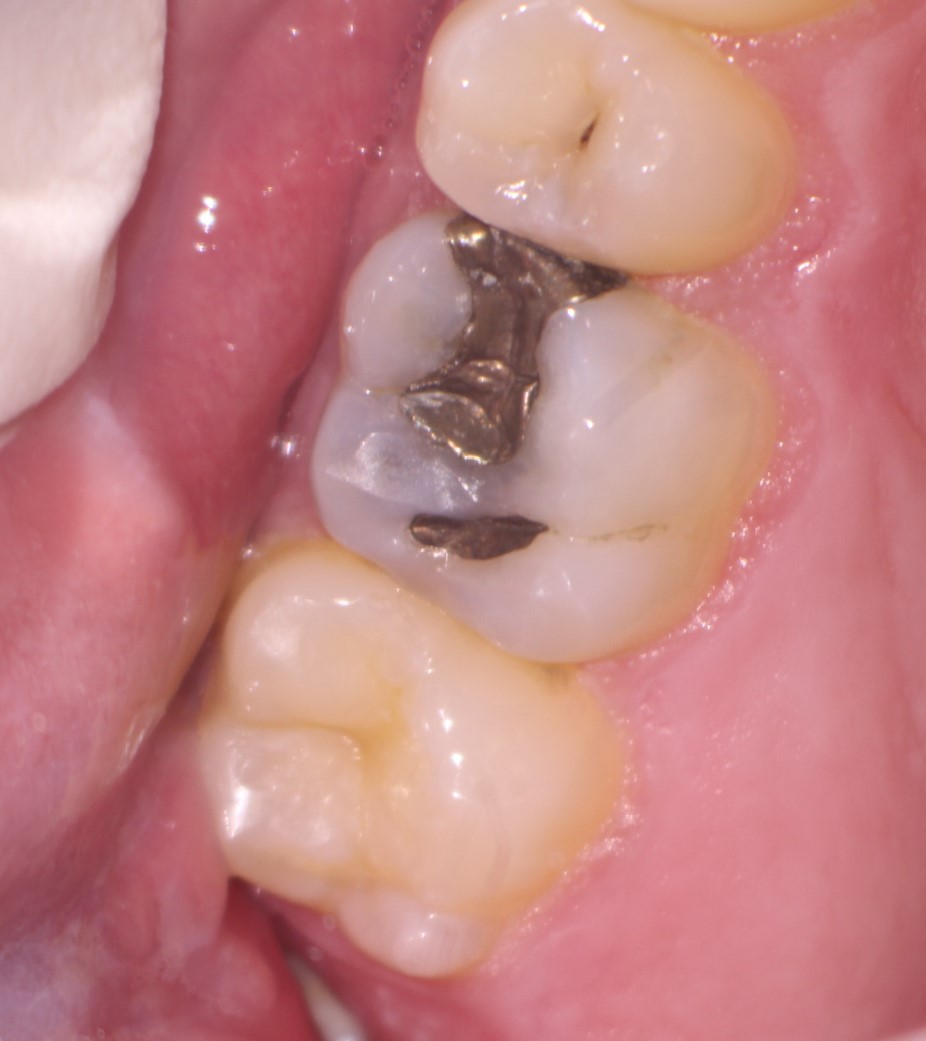Do not be fooled by obvious radiographic findings
This patient was seen on for assessment for possible retreatment of #46. The patient arrived with a current complaint of thermal (cold sensitivity) in the right posterior mandible. He had a history of Endodontic treatment of #46 in Brazil in 2017 and ceramic onlay restoration, which came loose and was recently re-cemented.



Clinical evaluation showed normal responses to percussion and palpation in #46 with only mild sensitivity to chewing. Perio probings were WNL. The onlay margins show signs of multiple cementations. #47 only has a small shallow O Ag.
The patient’s current symptoms of thermal sensitivity to cold were inconsistent with the presence of Endo treatment of #46. Therefore, we can say that #46 is not the source of his current complaint. Radiographic examination of #46 showed a persistent radiolucent finding associated with the M apex of #46. I also noted a deep MO Ag (with pulp protection) in #16 on the BW . Slightly elevated thermal responses were noted in #16, likely due to the depth of the restoration. However, the patient seemed convinced that the problem was in the mandible. The cervical areas of #44, 45 and 47 were very sensitive to cold stimulus.


Treatment options included the following:
- Addressing the patient’s cold sensitivity with topical desensitizing agents – Applied to the Bu aspects of #s 47,45,44 and 43. Re-evaluate.
- If the patient wishes to deal with the asymptomatic #46 that has the radiolucent M finding, we could:
- Access through the inlay and retreat the M root with the understanding that the prognosis is less than optimal because of the prior treatment and that surgical procedures (apicoectomy and retrofilling ) may be necessary after attempted conventional retreatment.
- Go directly to surgery, avoiding access through the existing restoration. OR

The Endodontic Surgical Option illustration as shown to the patient
3. No treatment – leave as is
4. Re-restore with new onlay or crown with the patient’s consent to restore over the existing radiolucent area. He would have to acknowledge ( in writing) that should the area be symptomatic again, the new restoration would need to be accessed or removed, or surgery would be necessary.
The patient was undecided at the time of treatment plan presentation.
It is always important to listen to the patient…first. Many clinicians focus on apparent radiographic “pathology” ( findings) rather than listening to the patient’s current complaint. Endodontists VERY frequently have patients sent to us to address thermal concerns AFTER endodontic treatment of a tooth in the area. This is non-sequitur, since the pulp has been removed.
( Note: There are extremely rare incidences where thermal sensitivity CAN occur in a previously Endo treated tooth. One example is the maxillary first molar where 3 canals have been treated and an entirely separate MB2 has been missed…causing the symptoms. But this is VERY rare.)
If your patient’s complaint is thermal sensitivity AFTER Endo treatment then there are two possibilities:
1. If symptoms are EXACTLY the same, then there likely was a misdiagnosis and the wrong tooth was treated
2. If symptoms are less, or are different, you can be sure it is another tooth and that symptoms are unrelated to the previous treatment.
More thorough diagnosis and testing are necessary.
